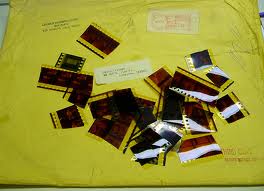 It’s a sad but all too common thing when an artist shares their experiences with a journalist for an article and then their comments don’t actually make it into the published story.
It’s a sad but all too common thing when an artist shares their experiences with a journalist for an article and then their comments don’t actually make it into the published story.
Most interviewees understand that journalists do a lot more reporting than can possibly be used in the average piece. But sometimes they don’t get it and you feel just awful about it.
I felt particularly bad about a source that got omitted from the article I wrote for today’s New York Times about Bay Area string quartets. I interviewed many people for the story and much of the input ended not even making it into the article. But this one very quirky and under-the-radar string quartet, where the musicians combine playing their instruments with singing, was supposed to get a mention. For space reasons beyond my control, the lines I devoted to talking about this group ended up on the cutting room floor.
I did something I don’t usually do: I wrote to the interviewee yesterday afternoon after I saw the final edit to tell her that her ensemble wouldn’t be appearing in the paper. I don’t know what compelled me to contact the interviewee — after all, I didn’t email at least half a dozen other sources to tell them the same thing. I think it was just something to do with the fact that we connected on the phone so well and that I am very interested in the group’s approach to string quartetting, being a singer and the host of a radio show about the vocal arts (VoiceBox on KALW). Plus, this quartet doesn’t have the same visibility as some of the other ensembles that did make the final cut. So I wanted to temper her expectations and apologize for the editors’ decision.
My source’s disappointment was palpable. She bemoaned being “the one group that always gets left out” and i had to write to tell her that many sources got left out. Sigh.
Interviewees need to understand that talking to a journalist is just one step in the process. The moral of the story: It’s wisest not to send out an email to your entire network telling people you’re going to be appearing in the New York Times until the article actually comes out.
